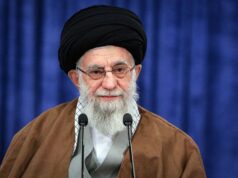Some 135 years ago, Abraham Lincoln said: “The world has never had a good definition of the word liberty, and the American people, just now, are in much need of one.” When it comes to religious bigotry, the First Amendment and the arts community, Lincoln couldn’t have been more prescient.
Does an artist have the liberty to depict religious symbols and characters in a denigrating light? Yes. Does a city or state, asked to fund such an exhibit with taxpayer money, have the obligation to stand athwart such bigotry and say “No!”? Absolutely. Mayor Rudy Giuliani should be thanked for taking this courageous stand for religious tolerance and civic standards.
An art exhibit, titled “Sensation,” which includes a depiction of the Virgin Mary stained with elephant dung, opened Oct. 2 at New York’s Brooklyn Museum of Art. Mayor Rudy Giuliani, realizing the Brooklyn Museum was funded to the tune of over $7 million a year by New York taxpayers, tried to stop it.
There are few religious symbols held as sacrosanct by the Christian community as the Virgin Mary, the mother of the Christian messiah. Denigrating this figure, in the most obscene forms, is nothing short of bigotry. If the Brooklyn Museum had an employee that openly denigrated Christian co-workers for their beliefs, or if that co-worker hung such a picture at his desk, or if that co-worker hung a picture of a nude woman from the pages of Playboy at his desk, there would be no question that the offending employee would lose his job. Employment and anti-discrimination laws have taught us that.
What to do then about an exhibit, funded from the same purse and open to the entire world, that discriminated in just the same way? Mayor Giuliani knew what to do; he threatened to withhold funding. The arts community is now suing the mayor for the money it believes it has a right to receive.
We’ve been here before. Some years ago the National Endowment for the Arts’ funding was threatened over an exhibit that had a depiction of Jesus Christ submerged in a bottle of urine. The NEA and the arts community won. But do Jews not have an obligation to stand with Mayor Giuliani on this issue?
We say “up to a point” when we talk about free speech in the context of work-place discrimination and religious bigotry. By submerging the Christian messiah in urine, when splattering the Virgin Mary with animal feces, have we not reached that point? For the avant-garde among us, we ask a simple question: How would Jews feel if the Brooklyn Museum hosted an exhibit with the Star of David submerged in urine, or with the Western Wall covered in pig dung, or with the Torah splattered with blood? With a near-unanimous voice we would call it what it is: religious bigotry. And we’d be right. We should be no less intolerant when it comes to our Christian brothers and sisters. The Virgin Mary today, the Torah tomorrow.
By raising the claim that art should not be subject to personal taste and that it should be covered by the First Amendment, the arts community shows its true arrogance: “Fund us,” they say, “but don’t judge us; we have an absolute right to your money.” In passing, we note that some of the best art of the ages, from van Gogh to O’Keeffe, received no public funding when it was painted. But we also recognize that there is a good case to make for subsidizing art. Good art does, after all, improve society and the way it sees and educates itself.
Some years ago, Professor Irving Kristol made the point “that no society can be utterly indifferent to the ways its citizens publicly entertain themselves.” Kristol further argued that the corollary to the premise that good art is of benefit to a society is that bad art can corrupt society: “If you believe that no one was ever corrupted by a (work of art), you also have to believe that no one was ever improved by a (work of art). You have to believe that all art is morally trivial and that, consequently, all education is morally irrelevant. No one, not even a university professor, believes that.”
The artists who depict religious symbols with utter contempt and disdain don’t believe that art is morally neutral. They are making a point, with their depictions, about how they feel and think about religion. The first duty of the government, however, is to make morally relevant decisions, and refusing to pay for religious bigotry with public funds is a decision that should not be hard to make.
Giuliani made the right decision here. During the litigation to ensue, we will hear people asking “Who has the right to determine socially redeeming value?” We all have that right, and we enforce it when we elect public officials. The mayor discharged his duty nobly, and we support his concern for religious tolerance. Kristol may have put it best: “If we believe in self-government, we should have selves worthy of governing.” Supporting the public funding of religious bigotry would say far more about ourselves and our worth than any of us should hope to want.
Government, Louis Brandeis said, is the best teacher. Giuliani is providing a good lesson for us all and deserves our support in his decision as we try to regain a proper understanding of true liberty.
Matthew Brooks is the executive director of the Jewish Policy Center, a think tank based in Washington, D.C. Seth Leibsohn is the center’s director of policy.





